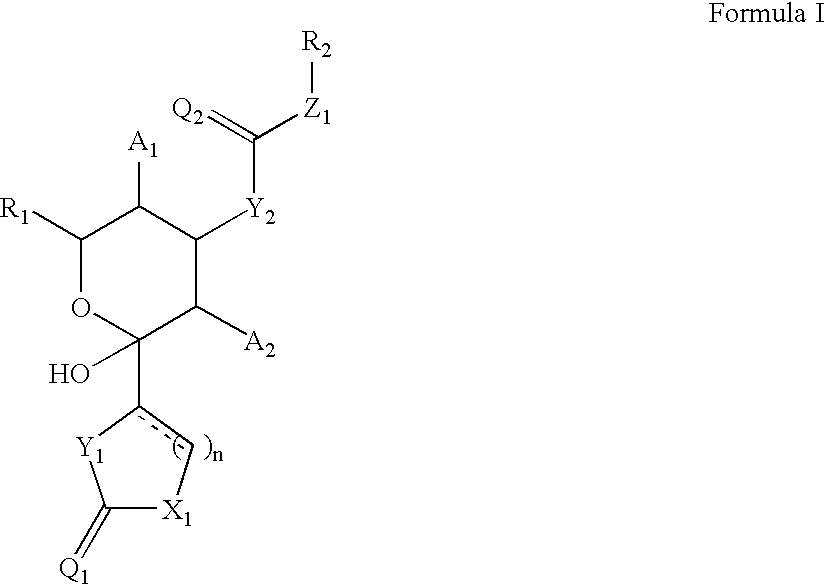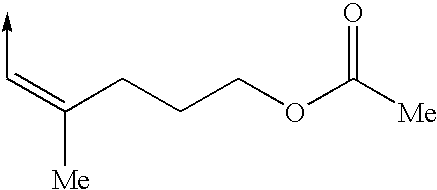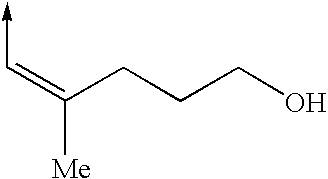Cytoskeletal active compounds, compositions and use
- Summary
- Abstract
- Description
- Claims
- Application Information
AI Technical Summary
Benefits of technology
Problems solved by technology
Method used
Image
Examples
example 1
[0249]
(4R)-2-(4-Methoxyphenyl)thiazolidine-4-carboxylic Acid
[0250] A 22 L three-necked round bottom flask fitted with an internal temperature probe and a mechanical stirrer was charged with L-cysteine hydrochloride monohydrate (500.0 g, 2.85 mol), sodium acetate (260.0 g, 3.17 mol) and water (4 L). The mixture was stirred until all of the L-cysteine dissolved. A solution of 4-methoxybenzaldehyde (426.0 g, 3.13 mol) in ethanol (3.5 L) was prepared and added to the reaction dropwise such that the internal reaction temperature was kept below 30° C. The reaction went from a clear solution to a thick white slurry during the addition of the 4-methoxybenzaldehyde solution. After 30 minutes, ethanol (3.5 L) was added to the reaction and the slurry thickened. Stirring was continued for 1 hour and then the solid was isolated by filtration, and the solid was washed with additional ethanol. The solid was dried in a vacuum oven at 50° C. over 48 hours to afford the title compound (610 g, 90%). ...
example 2
[0252]
(R)-3-Mercapto-2-(4-methoxybenzylamino)propanoic Acid
[0253] A 22 L three-necked round bottom flask fitted with an internal temperature probe and a mechanical stirrer was charged with sodium borohydride (221.3 g, 5.85 mol). Aqueous sodium hydroxide (1.75 L, 0.25 M) was added and the mixture was stirred until homogeneous. The solution was cooled to 0-5° C. The title compound from Example 1 (350.0 g, 1.46 mol) was dissolved in aq K2CO3 (2.1 L, 0.62 M). This solution was added to the solution of sodium borohydride over 1 h while stirring. The temperature of the reaction was kept below 30° C. during the addition. The reaction was stirred for an additional 1 h period, at which time HPLC analysis showed no remaining starting material. The reaction was cooled to 0° C. and glacial acetic acid (700 mL) was added dropwise with gentle constant stirring (CAUTION: The reaction mixture becomes foamy and evolves gas, and may overflow the reaction flask if acetic acid is not added slowly). Th...
example 3
[0255]
(R)-3-(4-Methoxybenzyl)-2-oxothiazolidine-4-carboxylic Acid
[0256] A 22 L three-necked round bottom flask fitted with an internal temperature probe and a mechanical stirrer was charged with the title compound from Example 2 (400.0 g, 1.66 mol), K2CO3 (480.0 g, 3.47 mol) and water (2.8 L). The mixture was heated at 40° C. while stirring until it became homogeneous and was then cooled to room temperature. A solution of N,N-carbonyldiimidazole (400.0 g, 222.47 mol) in acetonitrile (2.8 L) was added dropwise at a rate that maintained an internal reaction temperature less than 30° C. The reaction was monitored by HPLC and was complete upon the disappearance of the starting material (about 15 minutes). The acetonitrile was removed by heating at 40° C. and 80-100 torr. Isopropyl acetate (200 mL) was added and the pH of the mixture was adjusted to 2 with 3 M H2SO4. The biphasic mixture was filtered, and the organic phase was isolated. Additional isopropyl acetate was added and the sol...
PUM
| Property | Measurement | Unit |
|---|---|---|
| Time | aaaaa | aaaaa |
| Molar density | aaaaa | aaaaa |
| Molar density | aaaaa | aaaaa |
Abstract
Description
Claims
Application Information
 Login to View More
Login to View More - R&D
- Intellectual Property
- Life Sciences
- Materials
- Tech Scout
- Unparalleled Data Quality
- Higher Quality Content
- 60% Fewer Hallucinations
Browse by: Latest US Patents, China's latest patents, Technical Efficacy Thesaurus, Application Domain, Technology Topic, Popular Technical Reports.
© 2025 PatSnap. All rights reserved.Legal|Privacy policy|Modern Slavery Act Transparency Statement|Sitemap|About US| Contact US: help@patsnap.com



